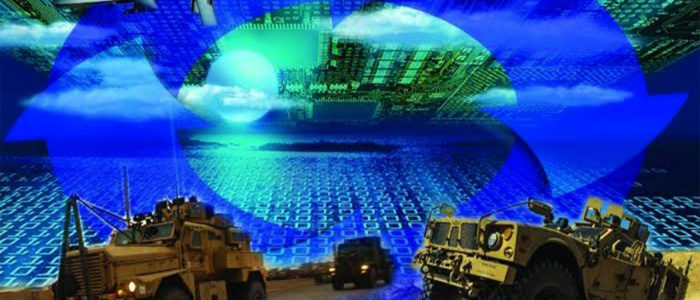Electronic warfare (EW) is gearing up in South Asia and the analysts are opining about the greater role of India in it, coupling it with cyber warfare (CW). The threat, in this scenario, is not Pakistan but China. Nonetheless, it will create security dilemma for Pakistan at the same time. Hence, the talks on the eastern side of the border are revolving around the possible reforms in Indian armed services. The budgetary allocation of Indian armed forces reads at $61.96 billion while that of China is $175.4 billion. Almost three times the former, yet it is contrasted with the budget of Pakistan, which is at around $12.6 billion as of 2018. This sets the equation for India against Pakistan and China.
China has boosted its reforms agenda in 2015 under the leadership of President Xi Jinping. The Chinese have expanded the Central Military Commission’s direct control over military operations and operational forces and all the technical functions were consolidated under the People’s Liberation Army Strategic Support Force (PLASSF). The said force’s establishment reflects a shift in priorities, with a greater focus on using a wide range of intelligence sources in supporting military operations. The current information warfare capabilities of China are an integration of CW and EW.
The Chinese recognise the complementarities between the electronic and cyber warfares and the role the electromagnetic spectrum plays for both. The establishment of theatre commands is tailored to exploit the creation of a unified information warfare service in the form of the PLASSF. For China, there is a link between both kinds of warfare, or what China calls integrated network electronic warfare and its relationship with ground warfare.
The current information warfare capabilities of China are an integration of CW and EW.
China does not have a formal doctrine or one that is publicly available. India on the other hand, does have an official policy. Regarding India’s Land Warfare Doctrine 2018, the Indian government has allocated billions of dollars to its armed services for enhancing the capabilities in network centric and electronic warfare. A case in point here is an indigenous 155mm/45calibre artillery gun known as Dhanush aimed at taking out long range targets with greater accuracy. The gun has been installed with advanced computing and electronic systems. The Defence Research and Development Organisation is also working on the advance version of the aforesaid gun. Speaking in terms of fighter jets, Rafael is fitted with a twin gun pod and a Nexter 30mm DEFA 791B cannon, which can fire 2,500 rounds in one minute. It is armed with laser designation pods for precision targeting from air to ground along with modern electronic warfare capabilities, which enables it to track eight different targets simultaneously. In addition, the network centric and electronic warfare capabilities of India include Battlefield Surveillance Radars, Weapon Locating Radar and Airborne Early Warning and Control Systems. These capabilities in the Indian Army would undermine Pakistan’s strategic position along the border.
For Pakistan, under the new concept of war fighting, the Pakistan Air Force has acquired advanced electronic warfare capabilities and airborne warning and control system aircraft to conduct electronic warfare and to support the command and control platforms while keeping the commanders fully aware of the battlefield. Under the naval capabilities and systems, RIBAT, an electronic support measures system, is the most important aspect of EW, required for a variety of ground, surface, and airborne applications, especially in maritime scenario. For the responsibility of manufacturing electronic equipment, National Radio and Telecommunication Corporation comes as a world-class manufacturer. Another production in the same line of warfare is Software Defined Radio (SDR), which is based on software configurable architecture. It ensures clear or encrypted voice and data communication in VHF and UHF frequency band (30-512MHz) as well as fully automatic integration with tactical and strategic networks to provide “cellular phone” services to tactical users. The SDR enables increased survivability against electronic threats by providing alternative communication functions compared to conventional radios. Other EW solutions are electronic field telephones, broadband antennas and power sources. Karachi Shipyard and Engineering Works have developed ELINT Threat Perception and Identification System for all kinds of emitters offering broadband coverage, high accuracy and sensitivity, automatic and manual operating modes, classifier for automatic emitter recognition and GUI based electronic order of battle. Of late, Jane’s has identified imagery of Chinese-based JY-27A counter-very-low-observable radar at Mianwali Air Base in Pakistan. It is a modern VHF-band system, not known to have been exported to Pakistan before. It speaks highly of Pakistan’s desire to deepen its ties with China vis-à-vis advanced Chinese surface-to-air missile systems. The aforesaid radar has been developed by China Electronics Technology Group Corporation.
With every passing year, the war is becoming more sophisticated as a result of more sophisticated technologies and their usage in the military domain.
It is evident that technology is driving the nation states toward achieving political objectives by other means, which in this case is technology in general and role of EW in particular. Clausewitz must have had considered these emerging technological aspects of war fighting domains if he were alive today. With every passing year, the war is becoming more sophisticated as a result of more sophisticated technologies and their usage in the military domain. This new method of warfare, will drive the two arch-rivals of South Asia toward a serious conflict thereby creating a security dilemma for Pakistan which would spark arms race in the region. The technologies which might have or must have been utilised for civilian purposes are now being employed for wars. The reliance on the technology is not being questioned here rather the question enquires as to what would be the end of it?
